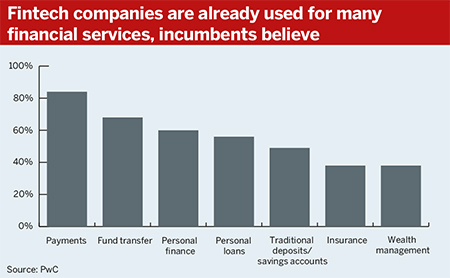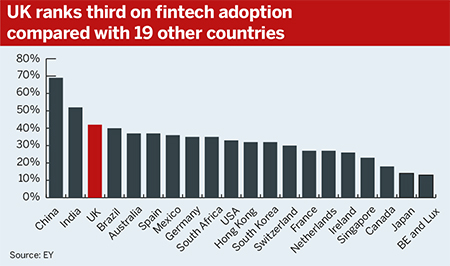Pensions Expert 20th Anniversary: There are big hopes that technology will improve financial control and outcomes for people through clarity, speed and choice, but the task of creating an open standard landscape is huge.
From a study on the customer expectations of online retailers, computing giant IBM has concluded that “yesterday’s ‘good enough’ is today’s ‘not even close’”.
In a world where everything from shopping to travel bookings and banking are done online ever more effortlessly, where search engines and social media make suggestions based on people’s profiles and previous activity, the digitally active will often have the same expectations of other websites – and pension providers are no exception.
Having data protocols is the fuel for the artificial intelligence fire
Calum Cooper, Hymans Robertson
Yet the digital reality of pensions is far removed from what the likes of Google have got us used to. The word ‘effortless’ seems far fetched to describe what savers experience when they try to access their pension data online.
“Technology hasn’t been embraced as it has in other industries,” says Calum Cooper, head of trustee consulting at Hymans Robertson.
The pensions dashboard, which the Treasury challenged the industry to put in place by 2019, is a positive step says Cooper, but mainly because it will act as a prompter “to get data into shape”.
Data cleansing facilitates innovation
Data is the axle around which technology revolves. Making data accessible is one big step the industry needs to take to up its game, but equally important is ensuring it is clean.
Once these two are in place, data ‘borders’ can be opened up and it can be made available to different providers or data aggregators.
“The one thing technology really needs to work on is data and innovation, get really good-quality data which is available in an open sense,” says Cooper.
Until high-quality data and ease of data flow are achieved, things such as platforms and robo-advice that encompass all of an individual’s wealth will be inhibited.
But the challenge is huge. “I’ve heard of cases where some people’s data are still on microfiche,” he says.
Large amounts of money and time will be needed to transition old-fashioned data records to state of the art systems. Cooper says it can be done, arguing that this investment would bring cost forward, not increase it.
The benefit of cleaning up data and getting it into a modern format now, he notes, is that it will also increase the likelihood of people receiving the right benefit.
But it will not be easy. “There’s a lot of historic legacy and work that needs to be done,” he says, adding that this can only be tackled by outsourcing the work to third-party administrators.
Will the tech revolution devour its children?
Cooper insists that “having data protocols is the fuel for the [artificial intelligence] fire”.
However, there are risks as well as advantages. Data protection is one major challenge for policymakers, as is the question of who is liable if software goes wrong.
Nonetheless, he says the opportunity outweighs the risk. The key will be to put in place regulation based on principles rather than rules, he argues, to avoid it having to catch up on the latest technological developments.
Tim Sharp, pensions policy officer at the Trades Union Congress, agrees.
“Regulation clearly has its place, but we know that if you have very rules-based structures there’s a risk of box-ticking.”
There is also a risk that those who want to work around the rules manage to do so, and he says robust governance is a better way to tackle this.

For Sharp, an important measure of how successful technological advance will be is how its rewards are shared and how people – who provide their data for free – will benefit.
“The saver always knows a lot less of what’s going on than the provider,” he says, arguing that this imbalance might go “even more out of kilter” with greater adoption of technology.
“Big data gives a provider a lot more information about clients and potential clients. Do they use this to target those customers who are the most profitable and maybe provide them with a better service? Or do you use technology generally for the benefit of all your customers?”
But he acknowledges technology also has the potential to bring better services to a greater number of people through lower cost.
Sharp warns however that the right incentives need to be embedded in the system.
“It has to be in the interest of pension providers using that technology to drive down cost in a way that benefits the end consumer and doesn’t just flatter the profit margins along the way,” he says.
While inequality of information is a concern, data security is what many focus on. The EU is tackling this with punitive new fines for data breaches.
There will be other regulations, on the format of data, that anyone handling EU customer information will have to adhere to under the General Data Protection Regulation from May next year.
“What you have to focus on is the system,” says Helen Baker, partner at law firm Sackers.
That could be everything from how robust it is, to who has access to data and whether they are trained on data protection.
The rules, which can be seen as a direct result of technological development, will mean trustees have to strike the right balance between, for example, profiling scheme membership to target specific groups – in the hope of better engagement – and not crossing the data protection line.
“What we find with data protection is it can bump up against other duties and responsibilities in a number of ways,” says Baker.
In cases where there is uncertainty she advises trustees to “do what is actually in members’ interests”.
Open standards will create future services landscape
Opening up access to data is not a new idea. The UK’s gov.uk Verify service is based on them, and next year the EU’s second Payment Services Directive will radically alter the way we experience banking and online shopping when it comes into force on January 13.
The impact of the new regulation will extend past merely allowing consumers to opt not to be redirected to a payment site when purchasing online.
The rules will also break up providers’ hold over their customers’ information, meaning individuals can allow other companies to aggregate their data.
A PSD2 for the pensions industry would really be required to open up innovation in that space
James Gin, DataSine
This can be used to, for example, create a single view of all of a person’s bank and savings accounts. In the US, data aggregator websites already provide this service by ‘screen-scraping’, or with the help of an application programme interface key.
James Gin, chief data scientist at fintech start-up DataSine, says: “A PSD2 for the pensions industry would really be required... to open up innovation in that space.”
While the dashboard provides something not dissimilar, “it is kind of co-owned by the big players”, says Gin.
The demand for a better customer experience is there, he says, as is a desire to improve people’s saving habits.
In the banking space, “quite a lot of banks are interested in improving financial wellness and actually communicating some of these things in a way that is more persuasive, so it could be very beneficial for the consumers”, he notes.
Bettering the financial situation and behaviour of individuals is a goal shared by pension funds and providers. Gin argues that giving savers a 360 degree view of their finances is needed to do so.
“I think it’s better for consumers, because if you actually want to promote wellness you do need to have all of those things considered,” he says.
The dashboard is therefore not enough, and, he thinks, not done in a way that encourages innovation.
“If you have a top-down approach where the dashboard is compiled by industry people it becomes a gated community… it does stifle a bit of the competition that would arise naturally.”
Breaking monolithic systems that handle pensions and deliver the services to members would allow smaller technology specialists like DataSine to enter the space.

“With a more open-architecture approach you’ll see the break-up of these into best-of-breed components and you’ll see services being provided by a network of organisations rather than just the pensions provider,” says Ben Cocks, founding director of investment automation specialists Altus Business Systems. “Ultimately, you’ll get better and cheaper services for members,” he adds.
New services could emerge
The new landscape would involve a single online identity for users to access different providers, while the structure underneath is owned by different companies.
Once users can see financial data on one screen, guidance and advice services could emerge that analyse that data.
“Then you’ll get service aggregation, where you can manage your pension and not just make decisions on it,” Cocks says. “And possibly you can imagine some innovation around the actual financial services products you’ll see.”
This, he explains, could eventually result in “blurring around the edges” of product providers, meaning companies sell across the pensions and investment chain.
“Rather than going to a pensions company to get your pension, going to an annuity company to get your annuity and going to your platform to get your investments, you can begin to see a compound product… provider emerging that might combine a deferred annuity with an investment package in some way.”
The discussion about open architecture seems a million miles away from the filing cabinets of some schemes, but Cocks says they have little choice: “They’ll have to move into this world sooner or later.”
There are two ways to deal with opening up systems, he says: outsource to a third-party administrator with a more high-tech solution, or put “a veneer of technology over the top” designed to allow schemes to interact with the outside world as if they were more automated.
Decisions, decisions
But not everyone is convinced that technology is the answer to the industry's prayers.
Blockchain and bitcoin: Trustees urged to adapt to change
 Many are still unfamiliar with the concept of bitcoin and blockchain, but experts say the pensions industry must engage with technology and accept change to adapt to an increasingly digital world.
Many are still unfamiliar with the concept of bitcoin and blockchain, but experts say the pensions industry must engage with technology and accept change to adapt to an increasingly digital world.
Steve Delo, managing director of Pan Governance, says the ultimate hurdle of engaging members will remain.
“Technology will probably make DC pensions easier to use and access,” he says. “It won’t, though, do much to increase pots or improve investment decision-making – mainly because most DC members aren’t doing any decision-making.”
They either actively opt for a default or do not make any choice at all, again landing in the default fund.
Delo even warns that a technology that makes it too easy to action investment decisions could risk members destroying value in their pension pot, and notes that the expectations for technology are “probably” too high.
“Technology won’t magic up changes here, just oil the wheels in the process of injecting cash and moving investments around,” he says.














